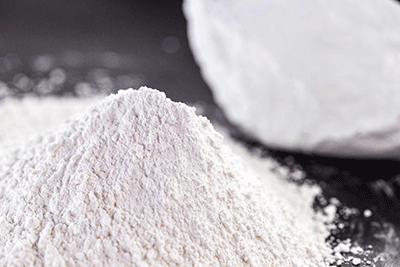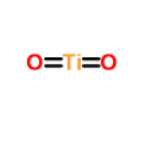


| Item | Index |
|---|---|
| Appearance | White powder |
| TiO2 content | 94.0% |
| Tinting reducing power | 1800 |
| PH | 6.0-9.0 |
| Moisture | ≤0.6% |
| Residue on 45μm | 0.02% |
| Resistivity of water extraction | / |
| Oil absorption | 20.0g/100g |
| Packing | In 25KG /500KG /1000KG bag or as per customer’s requirement |
|---|---|
| Storage | This product should not be stored outside or exposed to temperature extremes or to moisture.
To ensure optimum performance, it is recommended that the product is used on a first in, first out basis from receipt of shipment. |
Tel: 0086-25-52397808
E-mail: info@titanium-dioxide.net


| Common Names | TITANIUM DIOXIDE | ||
|---|---|---|---|
| Structure |

|
||
| CAS No. | 13463-67-7 | Boiling Point (℃) | 2900 |
| Molecular Weight | 79.866 | Melting Point (℃) | 1840 |
| Appearance | white powder | Bulk density | 3.84 |
| HS Code | 3206111000 | Flash Point (℃) | 2500-3000 |
| Safety Phrases | S2;S25;S26;S36;S36/S37 | ||
|---|---|---|---|
| RIDADR | No hazardous good according to the regulation. | ||
| WGK Germany | NONE | ||
| Packaging Group | NONE | ||
| Hazard Class | NONE | ||
| SYMPTOMS | PREVENTION | FIRST AID | |
| Inhalation | Cough. Sore throat. Redness. Burning sensation. Itching. | Use local exhaust or breathing protection. | Fresh air, rest. |
| Eyes | Redness. Pain. | Protective gloves. | Rinse opened eye for several minutes under running water. Then consult a doctor. |
| Ingestion | Abdominal pain. Nausea. Vomiting. | Do not eat, drink, or smoke during work. Wash hands before eating. | Rinse mouth. Induce vomiting (ONLY IN CONSCIOUS PERSONS!). Refer for medical attention . |
Titanium Dioxide Pigment R-5568
R-5568 is a specific type of rutile titanium dioxide pigment that is manufactured using the sulfuric acid method, along with aluminum oxide inorganic treatment and organic treatment. Titanium dioxide is a naturally occurring oxide of titanium and is widely used as a white pigment in various applications due to its excellent light-scattering properties and high refractive index.
The production process involving the sulfuric acid method, aluminum oxide inorganic treatment, and organic treatment is designed to enhance the pigment's performance and characteristics. Here's a brief explanation of each step:
1. Sulfuric acid method: This is a common method for producing titanium dioxide, where titanium ore (typically rutile or ilmenite) is dissolved in sulfuric acid to form a titanium sulfate solution. The solution is then further processed to obtain titanium dioxide as a precipitate.
2. Aluminum oxide inorganic treatment: Inorganic treatments are used to modify the surface properties of titanium dioxide particles. The addition of aluminum oxide during the manufacturing process helps in achieving better dispersion and stability of the pigment in various applications.
3. Organic treatment: Organic treatments involve the use of organic compounds to further modify the surface of the titanium dioxide particles. This treatment can improve the compatibility of the pigment with organic binders and enhance its dispersibility in different systems.
Features of R-5568 pigment:
- Good whiteness: Titanium dioxide is renowned for its exceptional brightness and whiteness, making it a sought-after white pigment for a wide range of products, including paints, coatings, plastics, and paper.
- Low oil absorption: "Oil absorption" refers to the amount of oil or binder a pigment can absorb. A lower oil absorption value means that the pigment requires less binder to achieve a given level of color strength, which can lead to cost savings and better performance in certain applications.
Given its characteristics, R-5568 is likely to be used in various industries where high-quality white pigments are required, such as in the production of paints, coatings, plastics, inks, and cosmetics, among others. It helps improve the brightness, opacity, and durability of these products.